The worst time to prepare to hire is when you desperately need help. The key to building a rock-star team starts well before you’re ready to onboard anyone. Operating as though someone else might need to run your business without you is a mindset that sets you up for success. This means establishing clear structures for planning, training, and managing a team long before the hiring begins. A solid foundation ensures that new employees can hit the ground running and keeps chaos, miscommunication, and office drama at bay. Below are six key moves to position your business for growth through a stellar team.
1. Design Your Organizational Chart with Intention
Start by creating an organizational chart that outlines the positions and departments needed to grow your business. Visualize how your dream team will look when fully built out. Go beyond names and titles—prioritize roles that directly impact sales and client retention metrics.
Think strategically:
- Which positions will immediately drive revenue?
- How can certain roles improve client satisfaction and loyalty?
A functional org chart that focuses on these priorities will help you allocate resources effectively and make hiring decisions that fuel growth.
2. Define Skill Levels and Role Requirements
Every role in your business requires the right fit, but how you define “right” depends on your strategy, budget, and long-term goals. Choosing between highly skilled professionals and entry-level hires involves tradeoffs that impact your business in different ways.
The Tradeoff:
- Highly Skilled Professionals: These employees bring expertise and experience to hit the ground running. They require less training and can often improve processes and deliver results quickly. However, they come with a higher salary expectation, and you’ll need to budget accordingly for recruitment and retention.
- Entry-Level Hires: These workers are more affordable and can be groomed to fit your company culture. However, they require robust, turnkey systems and exceptional training programs to ensure they succeed in their roles. Without these supports, entry-level hires may struggle to perform effectively or align with your business goals.
Key Considerations:
- What are the most critical tasks for this role? Do they require immediate expertise or can someone learn on the job?
- Does your current budget allow for investing in experienced talent, or is it better spent on developing systems and training for entry-level staff?
- For roles tied to revenue (like sales) or retention (like customer support), how quickly do you need results?
Pro Tips:
- If you opt for entry-level talent, invest in well-documented systems and repeatable workflows that minimize room for error. Clear onboarding and training programs are essential to get them up to speed.
- If you go with highly skilled professionals, focus on offering competitive compensation, benefits, and opportunities for growth to keep them engaged and motivated.
Every choice in human capital strategy shapes how your business operates and grows. Be intentional about the tradeoffs you’re willing to make and the investments required to support your decision.
3. Assign KPIs to Every Role
Hiring without a clear plan for how a role will move the numbers is one of the quickest ways to drain your resources—especially if your business needs immediate cash flow. Every hire should directly contribute to your bottom line or support your ability to serve clients effectively. To ensure this, assign Key Performance Indicators (KPIs) to every role before you even create a job posting.
Why KPIs Matter:
KPIs give clarity about how a role contributes to the business’s success. They provide measurable benchmarks for performance and guide both you and your employees in understanding what success looks like. Most importantly, KPIs serve as ROI indicators that help you decide whether the position is worth the investment.
Plan for ROI:
Before budgeting for a new hire, ask yourself:
- How will this role impact sales growth or client retention?
- What metrics will show whether the role is delivering value?
- Can I clearly measure the return on investment (ROI) for this position?
If you can’t answer these questions, pause and reassess. The cost of a role that doesn’t deliver results could sink your cash flow when you need it most.
Examples of Role-Specific KPIs:
- Sales Roles: Monthly revenue generated, number of leads closed, or conversion rates.
- Customer Support Roles: Client satisfaction scores, resolution times, or retention rates.
- Marketing Roles: Website traffic increases, lead generation, or campaign ROI.
By tying each role to KPIs, you ensure that every hire drives your business closer to its goals. A clear focus on measurable outcomes protects your budget and aligns your team with your vision for growth.
4. Host Data-Driven and Well-Designed Team Meetings
Productive team meetings are a critical lever for driving results and keeping your team aligned. Designing the cadence, agenda, protocols, and preparation guidelines for your meetings before you hire ensures your team hits the ground running in an environment where collaboration is taken seriously. When meetings are well-organized and focused, they set a tone of professionalism that encourages employees to show up prepared and make the most of the time together.
Key Elements of Productive Meetings:
- Meeting Cadence:
Establish a schedule that aligns with your goals. For example:- Weekly sales meetings to track progress toward revenue targets.
- Biweekly retention meetings to discuss client satisfaction and retention strategies.
- Monthly strategy sessions to review overall performance and adjust plans.
- Clear Agendas:
A clear agenda keeps meetings on track and eliminates unnecessary tangents. Each meeting should include:- Review of relevant KPIs (e.g., sales figures, client feedback, or project milestones).
- Updates on key initiatives and goals.
- Identification of challenges and collaborative brainstorming for solutions.
- Actionable next steps with assigned ownership and deadlines.
- Protocols and Prep Guidelines:
Ensure everyone comes to meetings ready to contribute. Set expectations such as:- Reviewing reports or dashboards ahead of time.
- Bringing specific updates or questions relevant to the agenda.
- Limiting interruptions by sticking to time blocks for discussion and decision-making.
- Accountability and Follow-Up:
Create a culture of follow-through by ending each meeting with clear takeaways. Summarize who is responsible for what and set deadlines for deliverables. This ensures the time spent in meetings translates to action and results.
Why This Matters:
When your team sees that meetings are intentional, organized, and focused on measurable outcomes, they’ll take them seriously. Productive meetings foster a sense of accountability, ensure clarity, and drive continuous improvement across the organization.
5. Document and Automate Your Systems
Your systems are the backbone of your business. Without clear procedures, employees can’t consistently deliver the quality you envision. Take time to document workflows for onboarding, operations, sales, and retention.
Examples of documented systems include:
- Sales scripts and close-of-sale checklists.
- Client onboarding guides and follow-up schedules.
- Procedures for handling customer feedback or complaints.
Automation tools can also lighten the load for repetitive tasks. If you need help designing these systems, reach out to Sistahbiz coaches who specialize in systematizing small businesses.
6. Invest in Leadership Training
Even with the best team, your leadership style can make or break their success. Invest in yourself as a leader by reading books on management, attending training, and working with a coach. This will help you:
- Cultivate a healthy team culture.
- Learn how to motivate employees effectively.
- Handle challenges like performance issues or conflict resolution.
Great leaders don’t just manage—they inspire. Be the kind of leader your team wants to follow.
Ready to Build Your Dream Team?
Sistahbiz is the leading business community for Black women entrepreneurs committed to collaborative planning, coworking, and growth.At Sistahbiz, we help Black women entrepreneurs like you design scalable systems, document workflows, and prepare for stellar hires. Start your journey today with a Sistahbiz coach: www.sistah.biz/business-coaching.

